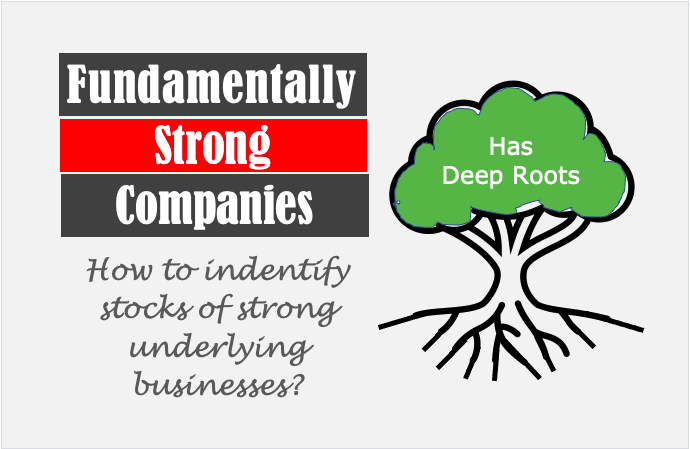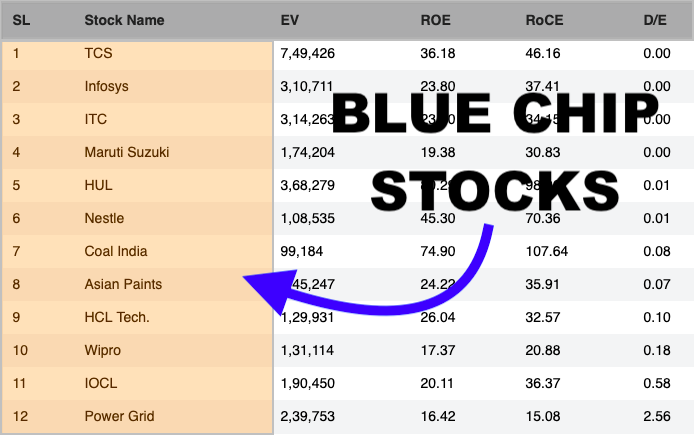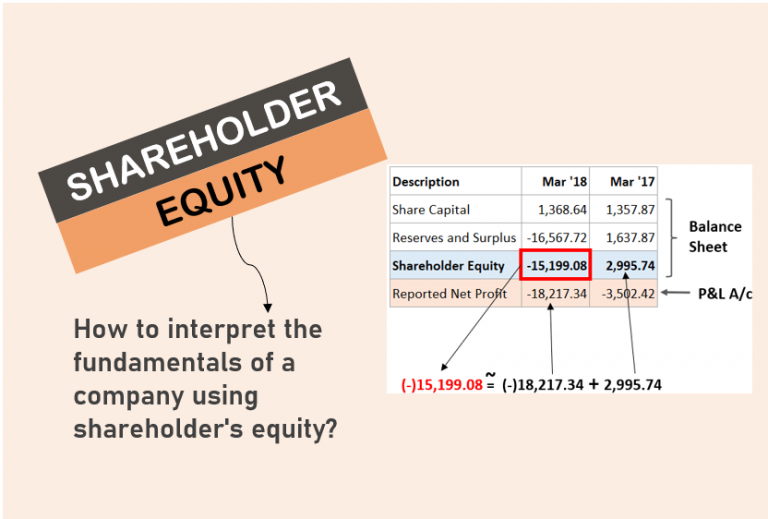The Price-to-earnings (PE) ratio stands as a fundamental metric for the interpretation of a stock’s price valuation. Here, the valuation of the company is measured relative to its profits. Understanding the nuances of low PE stocks is crucial for investors as it can offer valuable insights into potential investment opportunities. Here is a list of low PE stocks in India. [For a broader perspective, check out our guide on Top Stocks to Buy in India.]
The calculation of the P/E ratio is simple, it is done by dividing a company’s current stock price by its earnings per share (EPS). The PE ratio of a stock can reflect two perspectives.
- First: Some people will say that the PE ratio reflects the market’s expectations of a company’s future earnings growth. A high P/E ratio suggests optimism about future earnings growth. In contrast, a low P/E ratio may signal low quality and slower future growth prospects.
- Second: Some people will see the low PE ratio as an indicator of undervaluation. Stocks that are traded at a high PE multiples are considered overvalued.
As you can see, the above two perspectives present almost opposite interpretations of low PE and High PE ratios. Both are correct in their ways, but in a moment, only one interpretation can be correct.
Hence, people’s interpretation of low PE stocks is susceptible to errors, making the analysis prone to misjudgments.
List of quality low PE stocks [2024]
Updated: 20-Sep-2024
| SL | Name | Industry | Price | Market Cap(Cr) | P/E | PEG (5Y) | IND PE | AVG PE | GMR Score |
| 1 | CIPLA:[500087] | Drugs & Pharma | 1,639.50 | 1,32,571.49 | 30.76 | 1.04 | 27.54 | 32.66 | 12.31 |
| 2 | IGL:[532514] | Natural Gas Utilities | 539.8 | 37,551.54 | 19.45 | 1.17 | 21.64 | 29.31 | 9.57 |
| 3 | ACC:[500410] | Cement | 2,454.30 | 45,820.08 | 22.74 | 1.69 | 25.78 | 27.9 | 9.43 |
| 4 | PETRONET:[532522] | Natural Gas Utilities | 324.85 | 48,967.50 | 12.37 | 1.09 | 21.64 | 15.22 | 8.44 |
| 5 | LICHSGFIN:[500253] | Housing Finance | 662.8 | 36,705.70 | 7.69 | 0.4 | 9.76 | 10.33 | 8.41 |
How I See Low PE in Stocks
Mostly, a Low P/E presents an opportunity to identify undervalued companies. They are potentially such stocks that may be trading below their intrinsic value. Ideally, investing in low P/E stocks can lead to better returns. When we enter at a lower valuation, we are positioning ourselves for potential capital appreciation as the market reevaluates the stock.
I also consider the Low PE ratio as a metric pointing toward the margin of safety. Investing with this margin provides a cushion against adverse market conditions.
One of the primary risks associated with low PE stocks is the potential for value traps. Just because a stock has a low PE ratio doesn’t guarantee that it is undervalued. A thorough fundamental analysis to ensure the company’s financial health is a must.
Moreover, understanding the dynamics of the specific industry is also crucial. Stocks of some industries inherently trade at a comparatively lower PE ratio. A few examples of such industries are banking, metals, PSU Enterprises, etc.
Point 1: Understanding the PE Ratio Formula

P/E Ratio = Market Price / Earnings per Share (EPS)
The significance of a low PE ratio of stocks can be better understood if we know the PE formula. There are two components of PE ratio:
- Price: It can also be expressed as the market value of the company (Market capitalization) per unit share. A falling market cap may lead stocks to undervaluation. In our pursuit of higher returns, we must look for fundamentally strong stocks whose market cap (or price) is falling. How to estimate if a stock’s price is low or not?
- EPS: EPS is an acronym for ‘Earning Per Share.’ EPS is made up of two stock metrics, net profit, and shares outstanding in the market. Which stock will have a higher EPS? One which is making more net profits. A company that makes more profit each passing year, will eventually have higher EPS. A growing EPS is an excellent indicator of strong business fundamentals. For a given market price, the higher will be the EPS, the lower will be the PE.

Point 2: Why Low PE Stocks Matter
Low P/E stocks hold a special allure for stock investors. Understanding the rationale behind seeking them is crucial. This is especially true for people who seek to practice value investing.
A low PE ratio is a signal that a company’s stocks are undervalued. This might be due to temporary business-related challenges, less attention from the investors, or a broader market undervaluation trend.
Investors who look for low PE stocks do so with the idea of finding an undervalued stock. For them, it is an opportunity where the market has overlooked or underestimated a company’s true worth. This creates potential for capital appreciation as the market reevaluates the stock.
Potential for Higher Returns
- Reversion to Mean: Stocks with low PE ratios attract value investors looking for opportunities to benefit from the concept of mean reversion. If the market has temporarily undervalued a stock, there’s potential for the PE ratio to revert to historical averages.
- Earnings Growth: As the company addresses its challenges or as market conditions improve, earnings may rise. This will lead to a higher valuation and, consequently, higher returns for investors who bought the stocks at a lower PE level.
Margin of Safety
Low PE stocks provide a built-in margin of safety for investors. Even if the market sentiment is temporarily negative, the lower valuation acts as a buffer against significant losses. It acts as a safety against further value corrections. The price of a quality low PE stock cannot see indefinite price corrections. A level will come when its price becomes so attractive that more buyers will be attracted. This surge in demand will propel an upward price movement.
Moreover, for risk-averse investors, low P/E stocks align with a conservative investment approach. The lower valuation reduces the risk associated with paying a premium for growth that may not materialize.
Point 3: Advantages of Investing in Low P/E Stocks
Investing in low P/E stocks, particularly those associated with quality companies, can offer a range of advantages that go beyond mere valuation metrics. Let’s explore in detail how stocks of quality companies trading at low P/E multiples can deliver high returns.
3.1 Opportunity To Buy Quality Companies at a Discount
Quality companies often exhibit strong fundamentals, stable earnings, a competitive moat, and prudent management. Identifying such companies itself is a task on its own. When such companies trade at low PE ratios, it is like a rare opportunity.
Quality companies tend to grow their profits (EPS) over time, even during economic downturns. A low P/E ratio in this context may be a reflection of temporary market skepticism rather than underlying issues with the company.
3.2 Better Dividend Yield
Stock investing has two types of returns: (a) dividend income and (b) price appreciation.

A 5-year PE vs Dividend yield (DY) chart of a stock (NSE: TCS) is plotted in the chart shown above. The effect of every change in PE is visible in the dividend yield (DY).
- Mar’2018: when PE was at 10.63 level, DY was at 3.4%.
- Mar’2019: PE rose to 24.1, so the DY fell to 1.3%.
- Mar’2020: when PE fell to 21.2, DY rose to 5.5%.
- Mar’2021: PE rose to 36.52 and DY fell to 0.9%.
- Mar’2022: PE fell slightly to 35.95 level, and DY rose moderately to 1%.
| Description | Mar ’18 | Mar ’19 | Mar ’20 | Mar ’21 | Mar ’22 |
| P/E | 10.63 | 24.1 | 21.2 | 36.52 | 35.95 |
| Div. Yield (DY) | 3.40% | 1.30% | 5.50% | 0.90% | 1.00% |
This example highlights that a fall in PE (Price-to-earnings ratio) makes a stock dearer and vice versa. Why? Because a fall in P/E is associated with either a fall in price or an increase in net profit (EPS). Price fall will increase the dividend yield. An increase in PAT also means more dividends in the hands of the shareholders.
3.3 Better Price Appreciation From EPS Growth
A low PE stock, whose other business fundamentals are strong, will see a faster price appreciation. How? Fundamentally strong companies will experience faster future growth in terms of sales, EPS, net worth, etc. These growth rates are eventually reflected in the stock’s market price. The stock market loves to see a growing company. Such companies are rewarded more handsomely.

Example (HUL): The EPS of HUL rose from Rs.18/share to Rs.39.2/share from Mar’13 to June’22 at a growth rate of 7.7% per annum. In the same period, the share price of HUL rose from Rs.466 to Rs.2528 levels. It is a growth rate of 17.5% per annum.
A reasonable EPS growth rate of 7.7% is rewarded by the stock market with a price growth of 17.5% per annum. There are many more such examples. The stock market loves to see the fundamentals grow over time.
We can identify such companies by looking at their long-term PE trend. PE of HUL grew from Rs.18 to Rs.39 per share in the last 10+ years. The PE of such stock increases with time, leading to superior long-term returns (price appreciation) for the shareholders.
Point 4: Risks and Challenges of Investing in Low PE Stocks
Investing in low P/E stocks can present opportunities. However, it is equally important for investors to be aware of the potential risks and challenges associated with it.
4.1 Risk of Value Traps
A value trap occurs when a stock appears to be undervalued based on metrics like the P/E ratio. However, the underlying company faces fundamental issues that prevent it from realizing its true value. This is the reason why a deeper fundamental analysis of a low P/E company is unavoidable.
Importance of Fundamental Analysis: Relying solely on P/E ratios without conducting a thorough fundamental analysis increases the risk of falling into value traps. Investors should scrutinize a company’s financial statements, competitive positioning, and growth prospects.
Temporary Undervaluation vs. Structural Issues: Distinguishing between stocks that are temporarily undervalued and those facing long-term structural issues is crucial. Fundamental analysis helps investors make this critical distinction.
4.2 Considering Other Factors Beyond P/E Ratio
Earnings Quality: The P/E ratio alone may not provide a complete picture of a company’s financial health. Investors should assess the quality of earnings, considering factors such as recurring versus one-time income, accounting practices, and the sustainability of profit margins. Read more about operating profit.
Debt Levels: A low P/E ratio might be associated with high debt levels, which could pose a risk to the company’s financial stability. Examining the debt-to-equity ratio and the company’s ability to service its debt is crucial for a comprehensive analysis.
Industry Comparisons: Comparing the P/E ratio of a company with industry averages is essential. Some industries naturally have lower P/E ratios due to their characteristics, and a low P/E in such cases might be the norm rather than a signal of undervaluation.
4.3 Importance of Fundamental Analysis
Evaluating Management Competence: Fundamental analysis delves into the competence of a company’s management. Understanding the leadership’s track record, strategic decisions, and corporate governance practices provides insights into the company’s long-term prospects.
Cash Flow Analysis: Assessing a company’s cash flow is vital. Even if a company has a low P/E ratio, poor cash flows could hinder its ability to invest in growth initiatives or weather economic downturns.
Economic and Industry Trends: Fundamental analysis considers broader economic and industry trends. Evaluating how a company fits into the larger economic landscape aids in predicting its resilience to market changes.
Point 5. Are All High PE Stocks Overvalued?
These days, for experts, all high PE stocks are not overvalued. Some investors especially favor investing in high PE stocks. Quality stocks of some industries remain consistently higher. Read about PE ratios of industries in India.
Let’s understand it with an example of Bajaj Finance:
- Price: Rs.7,289
- EPS-TTM: Rs.142.41
- PE: 51.18 (7289/142.41)
If we use Benjamin Graham’s rule of PE15, Bajaj Finance is inordinately expensive. So it means, expert investors must be selling this stock, right? Not so. In the last 3 months, Bajaj Finance remained bullish (even at PE51 levels).

What could be the reason for this optimism? Why investors are still buying this stock at PE51 levels? The reason is hidden in the business fundamentals (future growth prospects) of Bajaj Finance.
Hence, to understand if a PE is low or not, we must see it in conjunction with its potential future growth rate. The future growth interpretation can be made by looking at past numbers. On average, Bajaj Finance as a company has grown at 20% per annum.

When a stock growth can grow its fundamentals at these growth rates, its PE multiples will trade at high levels (like Bajaj Finance).
PE and Growth Rate (PEG Ratio)
Stocks that have the potential for fast future growth, trade at high PE multiples. Investors are ready to pay a premium for such stocks. The point is, that even at a high PE multiple, a higher growth rate number can make a stock undervalued. How to interpret PE with growth? It can be done using another ratio called the PEG ratio. Read more about the PEG Ratio.

A stock whose estimated PEG is less than one (< 1) can be said to be undervalued. No matter how high is the P/E ratio, if its PEG is less than one, the stock can be said to be low priced.
Point 6. The Low PE Algorithm of My Stock Engine
A low PE ratio often signifies that a stock is trading at a lower price (valuation) relative to its net profits (EPS). While it can be tempting to interpret this as a straightforward signal to buy, successful investors avoid using low PE as their only metric to identify good stocks.
The key is to identify stocks with low PE ratios that are supported by strong fundamentals, promising growth prospects, and sound financial health.
Frankly speaking, at a point in time, there will be only very few stocks that will satisfy these conditions. So, it becomes almost like searching for a needle in a haystack kind of analogy.
How to find such stocks? This is where the algorithm of my Stock Engine becomes handy. Allow me to explain in brief how the low PE algorithm operates:

Six Metrics For The Low PE Filter
- Operating PE (PE without considering other income): We start by examining the Operating PE. It excludes non-operating income and one-time income. This ensures that the PE ratio is grounded in the core operational performance of the company. It provides a clearer picture of the true profit-generating potential of the company.
- Current PE Compared to Industry’s PE: Comparing a stock’s current PE to the industry average provides context for its valuation. A stock trading at a lower PE than its industry peers may indicate an undervalued gem waiting to be discovered.
- PEG Ratio: The PEG ratio takes the PE ratio a step further. It factors in the company’s EPS growth. When low PE is combined with a favorable PEG ratio, it suggests undervaluation and promising growth prospects. This metric guards against value traps and helps identify stocks with a balance of value and growth potential.
- Average PE Ratio: Comparing a stock’s current PE ratio with its 10-year average PE provides insight into valuation trends. A lower current PE relative to the long-term average suggests potential undervaluation. Such a comparison can aid investors in identifying stocks with favorable pricing and possible investment opportunities
A Case Study – Tata Motors
In 2011, Tata Motors found itself almost on the verge of economic collapse. Both global and domestic demands were uncertain for the company. Sales were falling, dragging the company’s stock price down to a low of Rs.140 per share.
Even at such price levels, the PE of the stock was at 21 levels. Considering that it is an automobile manufactured, PE21 is a high number. But the problem for the company was not PE itself, it was why PE was 21 at such a low share price (Rs.140). The worry was depleting profits (EPS).
Then came a strategic overhaul became of Tata Motors. Fuel-guzzling SUVs were sent packing, replaced by a leaner line-up of fuel-efficient cars. It was also the dawn of a new era – electric vehicles. Costs were trimmed with surgical precision. The debt, which was like a heavy chain around the company’s neck, was slowly loosened.
Yet, this internal transformation wouldn’t be enough. To truly soar, Tata Motors needed wings. And it found them in the form of Jaguar Land Rover (JLR) in 2008. This bold acquisition wasn’t just about brand prestige; it was a passport to lucrative international markets.
Tata Motors saw the future gleaming on the horizon. The promise of electric mobility was their chance of revival. While most automakers hesitated, Tata Motors plunged headfirst into EV development. The Nexon EV, India’s first electric SUV, became their crown jewel, a testament to their vision and daring.
The revenue and profits, once anemic, began a steady climb, surpassing even the most optimistic forecasts. The debt load started easing and the P/E ratio started becoming healthier in line with the industry standards (hovering between PE14 to PE16).
Conclusion
A multi-faceted approach is essential in our search for quality low-PE stocks. The Stock Engine’s algorithm, incorporating Operating PE, Industry Comparison, PEG Ratio, P/S Ratio, ROE, and D/E Ratio, is one way to find them. It aims to provide a holistic view of a stock’s potential.
We must remember that while low PE stocks present intriguing opportunities, thorough due diligence about why PE is low must be done. One must consider industry dynamics and must also verify macroeconomic factors. They are crucial for successful stock picking.
Armed with this knowledge, we can navigate the markets with confidence, seeking out those hidden gems poised for sustainable growth.
The Stock’s Engine is also coded to estimate the intrinsic value of about 1300+ stocks.
Have a happy investing.
Suggested Reading:







I think that valuing a company based on PE is old school If one would have stuck to the old valuation models then they would have avoided all the bumper and stocks and bought all the duds such as PSUs. It is better to look at the growth of the sector and pick those companies which can sustain robust growth over the long term and not look at current valuations if you are ultimately going to stick with the company over the long term.
You are right about PSU’s, most of them trade at single-digit PE’s but can’t find enough buyers. But the reason for it is different.
The utility of the PE ratio for quick valuation is unquestionable. But one cannot treat the PE ratio as an ultimate valuation tool. Hence the concept of intrinsic valuation is used by experts.
Thanks for posting your views.
This article written almost an year ago. But on the top it says….Updated: 5-June-2021. I think it is one year old data. Figures have changed much within 1 year. Where can we get the updated data
The stock list gets updated every week.
nice way to guide beginers in very simple way.keep it up
Dear Mani,
What an easy and beautiful explanation. You made me a fan. I was not knowing abc of stock selection . It now enhances my understanding to a good level. Thank you.
Even for a layman in stock market like me, it is easily understandable and really good to read your study material….but it is difficult for each and every individual to analyse on their own and invest. I am proficient in my area of work. I cannot become a stock market expert as I do not have time to invest in analysing. So I have to trust some advice of market experts. Don’t know whom to follow as there are plenty ….
Good study material
hi,
I am regular reader of your articles. The articles are explained in simple, layman language with examples and are very useful. But today, share market is becoming more complicated. With so many external factors playing, it is too difficult to find out stocks which will give good appreciation. For eg, graphite and HEG are having very good fundaments, fall under best PEG stocks, but, of late , due to changes in the external reasons, china relaxing pollution norms for graphite electrodes, there is sudden fall, that too huge fall in share price. Similarly or some rumours, other factors, zee, adani ports etc are falling. Is there any way to find out good companies, even in these circumstances
Very well explained with detail. Doubtlessly appreciable.
VERY EDUCATIVE AND USEFUL
Thanks for commenting.
Thanks Maniji.
Today I understood significance of PEG.
Thanks for feedback.
Very good informative article.Thanks
Thank sir,
For educating me
Thank sir,
Your detail explenation
Excellent explained…